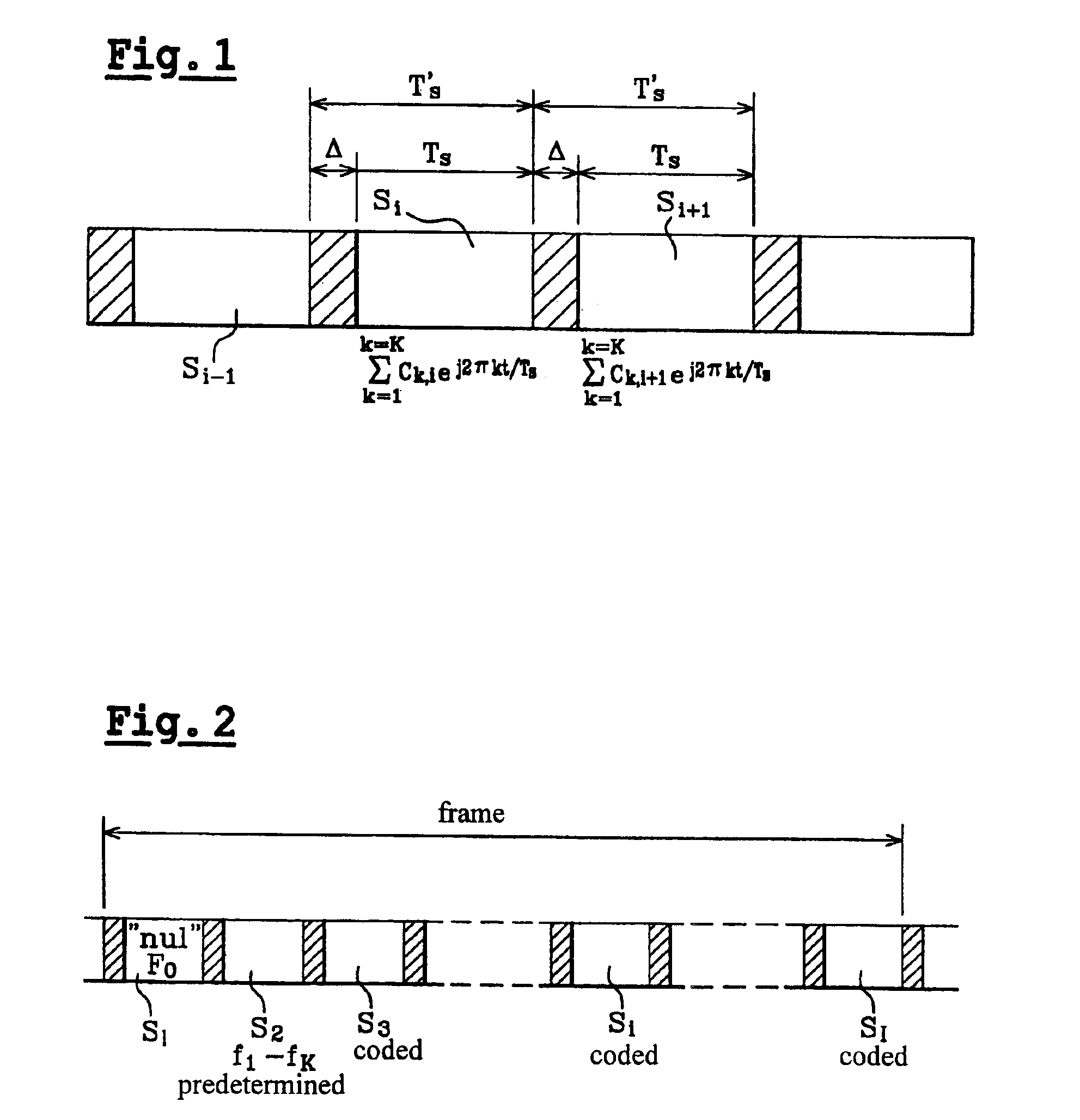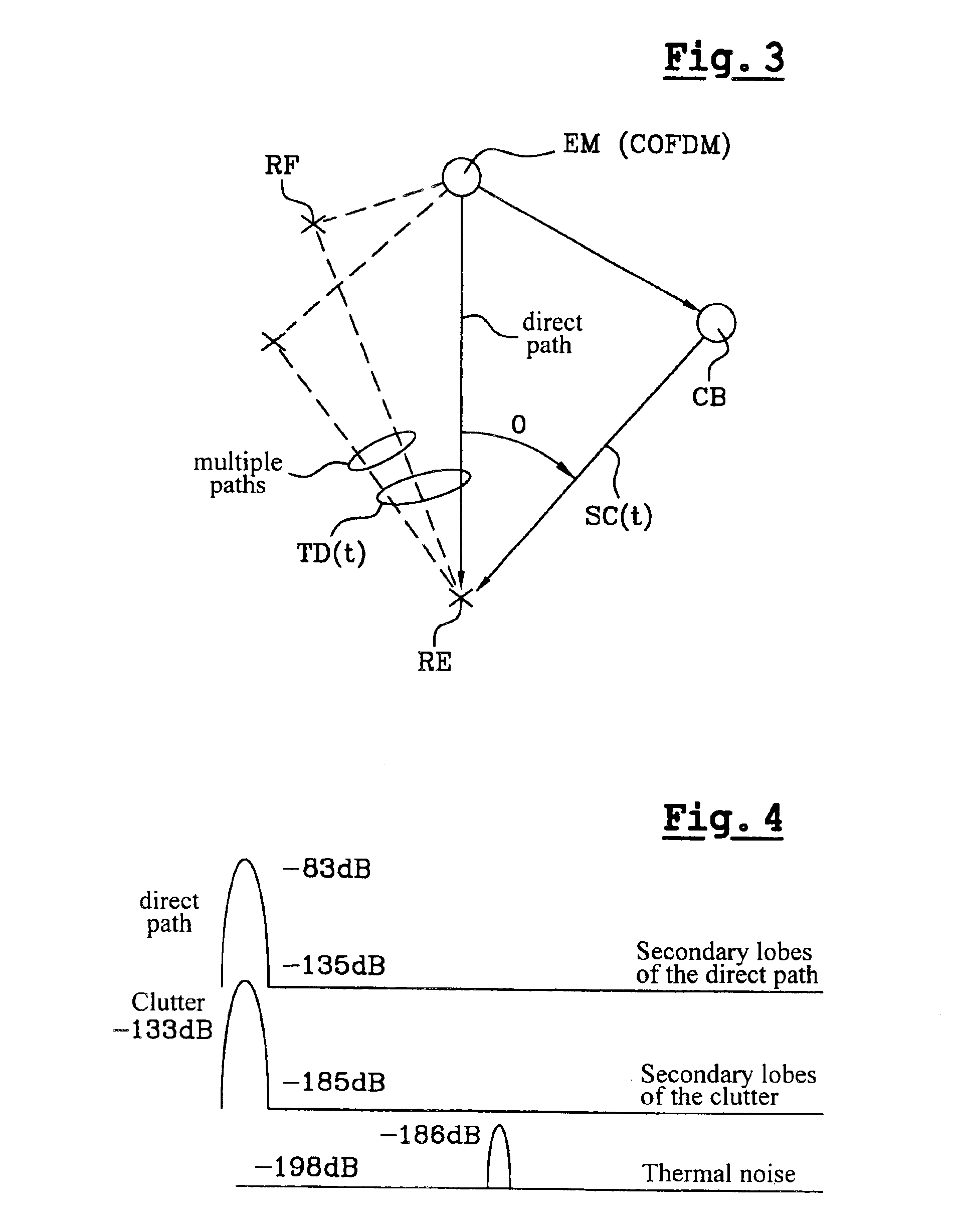Clutter rejection in a passive radar receiver of OFDM signals
a passive radar and receiver technology, applied in direction finders using radio waves, instruments, reradiation, etc., can solve the problems of not optimizing methods, becoming impossible to detect targets, and difficult, if not impossible, to achieve the theoretically achievable detection performance limits of mobile targets
- Summary
- Abstract
- Description
- Claims
- Application Information
AI Technical Summary
Benefits of technology
Problems solved by technology
Method used
Image
Examples
first embodiment
[0062]Although this first embodiment has been described for a bistatic radar, it can be applied to a monostatic radar. It can also be used in a radar with a plurality of receive antennas and therefore a plurality of filtering operations by subtracting spectral lines depending on transfer function coefficients {overscore (H)}1 to {overscore (H)}K for the K spectral lines relating to each receive antenna in the filtering circuit 2, which produces as many filtered signals X′(t) as there are antennas to be processed in parallel in the Doppler channels of the circuit 4, as in the circuit 4b shown in FIG. 6.
[0063]In the embodiment described above with reference to FIG. 5, the received signal X(t) is processed to eliminate the contribution of the direct path and the multiple paths between at least one COFDM emitter EM and the receiver REa. However, scatterers, such as interference and thermal noise in the wanted frequency band, are not eliminated in the signal X′(t) processed by the correl...
second embodiment
[0064]In a second embodiment, shown in FIG. 6, the radar receiver REb aims to eliminate all correlated unwanted signals and scatterers.
[0065]The receiver REb for COFDM signals comprises a plurality of receiver antennas 111 to 11N connected to a plurality of receivers 121 to 12N, respectively, with N≧2. The radar receiver REb has a structure identical to that of the receiver REa shown in FIG. 5, but with N parallel receive channels between the circuits 13b, 14b, 2b and 4b respectively associated with the antennas 111 to 11N.
[0066]The detector 3 and the replica estimator 5 are not modified. The detector 3 produces the reference signal SR(t) relating to one of the antennas 111 to 11N, for example as a function of the K spectral lines SP11 to SPK1 of the first channel connected to the antenna 111, which are delivered by the spectrum analyzer 21b which analyzes N received symbol streams supplied by the truncator circuit 14b. The estimator 5 produces a narrowband emitted signal replica Re...
PUM
 Login to View More
Login to View More Abstract
Description
Claims
Application Information
 Login to View More
Login to View More - R&D
- Intellectual Property
- Life Sciences
- Materials
- Tech Scout
- Unparalleled Data Quality
- Higher Quality Content
- 60% Fewer Hallucinations
Browse by: Latest US Patents, China's latest patents, Technical Efficacy Thesaurus, Application Domain, Technology Topic, Popular Technical Reports.
© 2025 PatSnap. All rights reserved.Legal|Privacy policy|Modern Slavery Act Transparency Statement|Sitemap|About US| Contact US: help@patsnap.com



